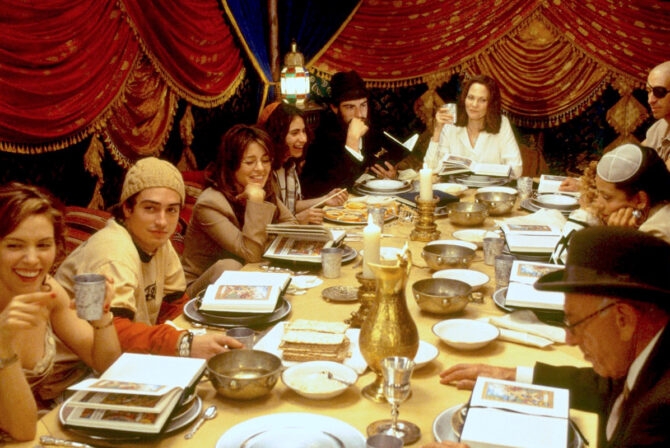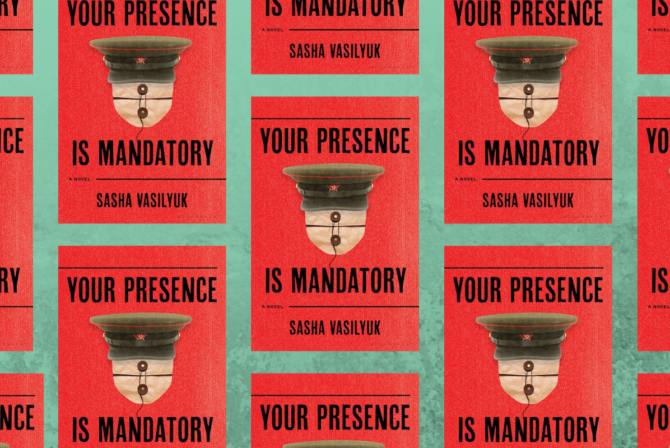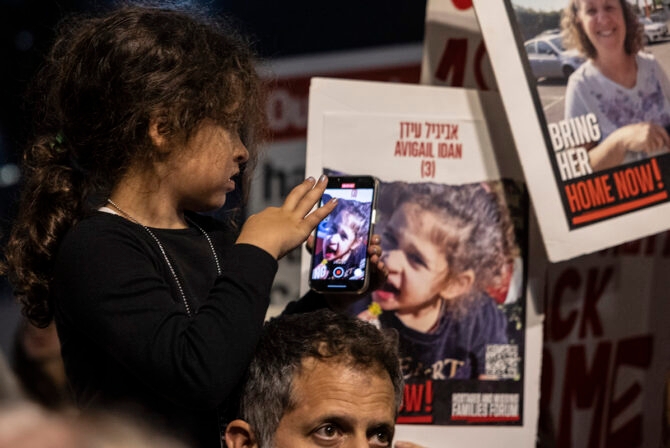
The Kveller blog has recently featured two posts which speak directly to one of the major challenges facing the Jewish community right now—that of intermarriage and mixed families. Alina Adams wrote about her experience being married to a non-Jew, who is not welcome as a member in their Conservative shul, and Mayim Bialik expressed her distaste for the Star of David Christmas-tree topper (which has apparently been a huge seller, according to a Jerusalem Post article by our own Jordana Horn).
I appreciate the perspectives offered by my fellow Kvellers, and I’d like to share my own. My husband’s heritage is entirely Jewish, as far as we know. The majority of my heritage is Jewish, but not all of it. I have ancestors who were Catholic and Protestant, and I grew up in New Mexico, surrounded by Catholic art and culture. However, I am Jewish, my husband and I keep a Jewish home, and we are raising our children as Jews.
We’re not going to have a Christmas tree in our house this year (or any year, as far as I can tell), but we have a small wooden cross covered in silver
milagros
on our mantle. A framed picture of the Patron Saint of Mantova, Italy, hangs in our upstairs hallway, right around the corner from a floor-to-ceiling bookcase of Judaic literature and references. We have a beautiful collection of Mexican folk art, in honor of
el Dia de Los Muertos
, or the Day of the Dead, right next to our menorahs and hamsas.
I respect that many of our readers (including Mayim, whom I consider a friend) may be deeply concerned, or perhaps even offended or horrified by the idea of Christian and pagan icons in a Jewish home. I understand that, and I think our divergent views are precisely what make the Jewish community so rich, vibrant, and durable. I also think that disagreeing about, and struggling with, important issues (and even unimportant ones), is an integral part of the Jewish psyche; an acknowledgment of divergent views is even built into the structure of some of our most important writings.
People are complex, most of us don’t fit into neat little boxes, and I believe we lose something important when we try. I am proud to be Jewish, and I am equally proud to be the granddaughter of a Protestant American World War II soldier who married the woman he loved, despite the fact that his bigoted family refused to acknowledge her, as she was not only Italian, but she was also Catholic and (*gasp*) Jewish. I grew up listening to my mother and grandmother speak in Italian when they didn’t want my siblings and me to understand. I grew up going to my cousins’ bar and bat mitzvahs and trying to understand just what it meant to be German and Jewish and Italian and Catholic and American and Protestant. It took me a long time to figure out that while my path is Jewish, and my life and family will be Jewish as well, all of those other things are an important part of who I am.
The artwork and symbols on display in our home aren’t a reflection of devotion to another faith, or ambivalence about, or disrespect towards, my Jewish heritage and practice. It’s my way of acknowledging and honoring the generations that came before me, l’dor v’dor. Perhaps most importantly, I want to teach my daughters that life is messy, that people are complicated, and that it’s ok to be who you are, and love what you love, regardless of whether or not it can be neatly defined or labeled.







